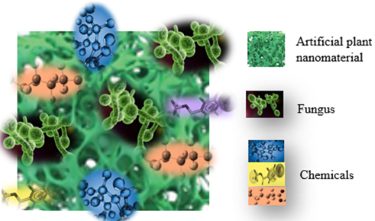Technology Profile

Scientists at Texas A&M AgriLife Research developed a novel technology that can efficiently bind to and break down per- and polyfluoroalkyl substances (PFAS) in the environment. Their approach combines a plant-based material that adsorbs PFAS and a fungus that can take up the chemicals.
Current strategies to clean up PFAS can be costly, inefficient, and create toxic secondary pollutants. By combining fungal remediation and plant-based materials , the researchers can achieve environmentally friendly and efficient PFAS remediation.
| Technology | The research team developed a platform called Renewable Artificial Plant for In-Situ Microbial Environmental Remediation (RAPIMER) that is made from the leaves, stalks, and cobs of corn plants left in the field after harvest. Their approach combines RAPIMER with a type of fungus that eats PFAS and RAPIMER itself. |
|---|---|
| Innovation | The scientists found that RAPIMER can successfully bind PFAS at higher concentrations than other currently available sorbents and that the fungus can remove more than 98% of PFAS after two weeks of treatment. Their strategy is unique in that the PFAS binding, fungal growth, and remediation happen within a single platform. Those steps typically occur separately. Because RAPIMER is derived from a renewable, abundant plant source and creates no secondary pollutants, it lowers environmental impacts compared to other remediation strategies. The platform also removes other drinking water contaminants besides PFAS, making it useful under several conditions. |
| Contaminant and Media | PFAS in drinking water |
| Technology Readiness Level | TRL 4 - Component validated in a lab environment |
| Principal Investigator | Susie Dai , Joshua Yuan , Gregory Lowry |
| Institution | Texas A&M AgriLife Research |
| Grant Number | R01ES032708 |
to Top



